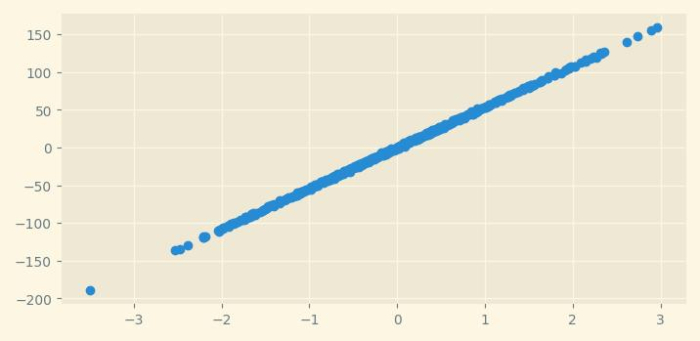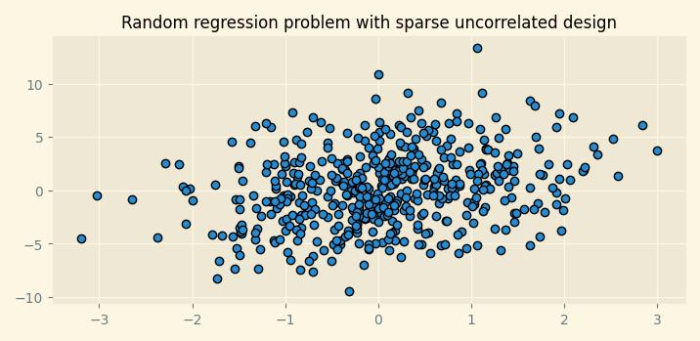
 Data Structure
Data Structure Networking
Networking RDBMS
RDBMS Operating System
Operating System Java
Java MS Excel
MS Excel iOS
iOS HTML
HTML CSS
CSS Android
Android Python
Python C Programming
C Programming C++
C++ C#
C# MongoDB
MongoDB MySQL
MySQL Javascript
Javascript PHP
PHP
- Selected Reading
- UPSC IAS Exams Notes
- Developer's Best Practices
- Questions and Answers
- Effective Resume Writing
- HR Interview Questions
- Computer Glossary
- Who is Who
How to generate random regression problems using Python Scikit-learn?
Python Scikit-learn provides us make_regression() function with the help of which we can generate a random regression problem. In this tutorial, we will learn to generate random regression problems and random regression problems with sparse uncorrelated design.
Random Regression Problem
To generate a random regression problem using Python Scikit-learn, we can follow the below given steps ?
Step 1 ? Import the libraries sklearn.datasets.make_regression and matplotlib which are necessary to execute the program.
Step 2 ? Provide the number of samples and other parameters.
Step 3 ? Use matplotlib library to set the size and style of the output figure.
Step 4 ? Plot the regression problem using matplotlib.
Example
In the below example, we will be generating regression problem with 500 samples.
# Importing libraries from sklearn.datasets import make_regression from matplotlib import pyplot as plt from matplotlib import style import seaborn as sns # Set the figure size plt.rcParams["figure.figsize"] = [7.50, 3.50] plt.rcParams["figure.autolayout"] = True # Creating and plotting the regression problem style.use("Solarize_Light2") r_data, r_values = make_regression(n_samples=500, n_features=1, n_informative=2, noise=1) plt.scatter(r_data[:,0],r_values,cmap='rocket'); plt.show()
Output
It will produce the following output ?

Random Regression Problem with Sparse Uncorrelated Design
Python Scikit-learn provides us make_sparse_uncorrelated() function with the help of which we can generate a random regression problem with uncorrelated design.
To do so, we can take the below given steps ?
Step 1 ? Import the libraries sklearn.datasets.make_sparse_uncorrelated and matplotlib which are necessary to execute the program.
Step 2 ? Provide the number of samples and other parameters.
Step 3 ? Use matplotlib library to set the size and style of the output figure.
Step 4 ? Plot the regression problem using matplotlib.
Example
In the below example, we will be generating regression problem with 500 samples and 4 features. The by default value of n_features parameter is 10.
# Importing libraries from sklearn.datasets import make_sparse_uncorrelated from matplotlib import pyplot as plt from matplotlib import style # Set the figure size plt.rcParams["figure.figsize"] = [7.50, 3.50] plt.rcParams["figure.autolayout"] = True # Creating the regression problem with sparse uncorrelated design X, y = make_sparse_uncorrelated(n_samples=500, n_features=4) # Plotting the dataset style.use("Solarize_Light2") plt.figure(figsize=(7.50, 3.50)) plt.title("Random regression problem with sparse uncorrelated design", fontsize="12") plt.scatter(X[:,0],y,edgecolor="k"); plt.show()
Output
It will produce the following output ?


